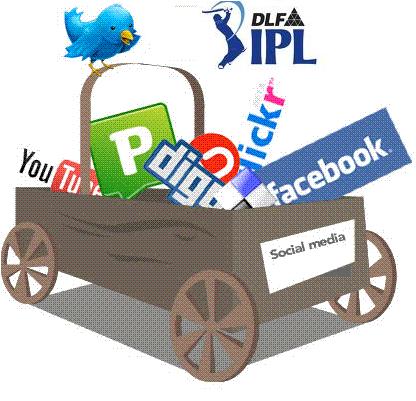
The IPL tried to penetrate the mind of the consumer using continuous bombardment of its marketing messages rather than subtly trying to get the message through. As a result, the IPL is everywhere.On the hoarding outside your office window, on your Android device as an app, on the public transport vehicle which you use to commute and even on your computers through YouTube and other portals.
If we were to form a marketing matrix for consumer reactions to cricket in general, we would find that most of the consumers would be true fans. The IPL marketing matrix can be divided into the following subgroups
a) Cricket lovers who watch any and every form of cricket
b) Cricket lovers who watch the IPL because of the lack of other alternatives
c) Non cricket lovers who watch the IPL because of its EQ (entertainment quotient)
A small survey would tell us that the majority of the consumers of the IPL brand would be youngsters (both male and female) followed by middle-aged men and women and the rest would be switchers who are indifferent towards the IPL. Furthermore the majority would be middle aged men followed by young boys.
Thus we can clearly see that the IPL consists of mostly spurious followers who would switch given a better option and, in effect, actually leads to the loss of a certain section of puritan true fans of cricket because of its overkill. The question then arises is: Is the IPL marketed well enough as a promoter of cricket?
The marketing strategy of the IPL is to subconsciously get the consumer to market the event through word-of-mouth strategies because in a culture like India, this form of communication works better than any other. Thus the IPL advertisements on national television were vocal in promoting the IPL as a festival of sorts using a sofa and a television to showcase it as a family event at times while focusing on large crowds at other times to market it as an event of mass appeal. The expectation was to strike a chord in the mind and heart of the consumer that everyone is watching the IPL and, more importantly, everyone should watch the IPL.
The IPL had something to offer for everyone. T20 had exploited the popularity of a fast, compact game previous associated with soccer and American football. The IPL explored the possibilities of the dalliance of T20 with the world of entertainment thus bringing a closure to the needs of the consumers who were bored with drawn or washed out Test matches or soggy soap operas. The result was a heady marketing cocktail to quote Business Standard. The IPL stimulated consumers across the spectrum on the parameters of innovation, excitement, action and entertainment and literally forced them into buying into its equity. It sold nationalism and other secondary alliances at premium prices on a golden platter and the sensitized audiences were quick to lap it up.
Lastly, unlike other sporting events which often follow muted marketing strategies to ensure that the sensibilities of sport lovers are not hurt, the IPL unabashedly marketed itself as an umbrella brand for its sponsors. So when a batsman succumbed to a Karbonn Kamal catch while trying to go for a DLF Maximum, it was considered to be a Citi moment of success. Probably for the first time in the history of the game advertising had crossed the hallowed altars of the commentary box. The IPL was a corporate event with the boardrooms of Fortune 500 companies serving as the pitch and the glitterati and the paparazzi as the spectators.
Yes, the IPL was extremely well marketed but not as a cricketing event. Thus, without a core competency, it might struggle to find its footing in the long run. Secondly, the aggressive marketing strategies of the IPL raise a very pertinent question. Can we term it as a best marketing practice when a popular brand expend large amounts of resources in the pursuit of larger gains and, knowingly or unknowingly, take the game beyond its right direction?
